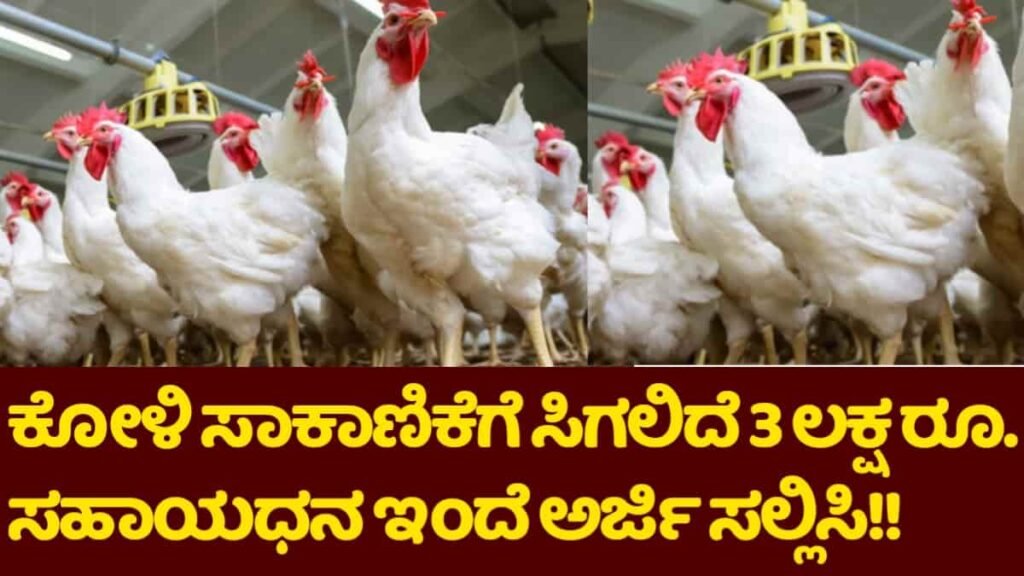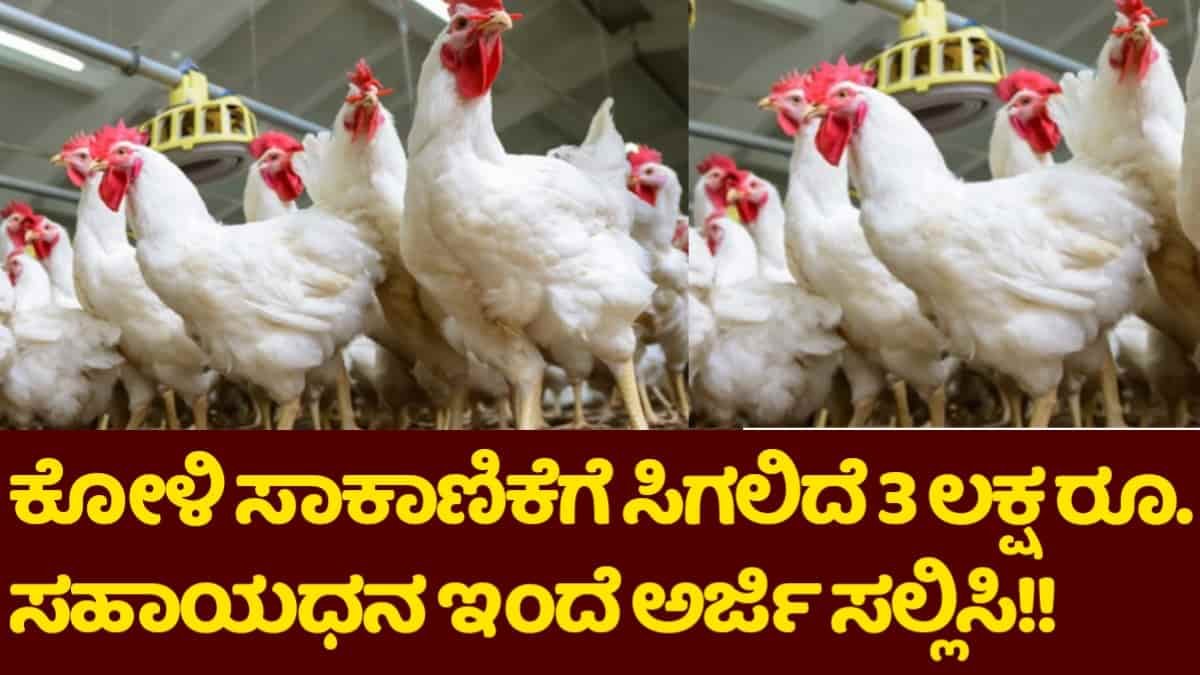Poultry farming in India has evolved into a profitable agribusiness opportunity that can generate sustainable income with relatively low startup costs. Whether you’re a small farmer in a rural area or an aspiring entrepreneur in a semi-urban region, poultry farming offers a clear path to self-employment and financial independence. With growing demand for meat and eggs, supportive government schemes, Gram Panchayat-led initiatives, and institutional loan options, 2025 is an excellent year to begin this venture.
This comprehensive guide will walk you through everything you need to know about starting a poultry farm in India—from choosing the right type of poultry to applying for loans and subsidies, and building a low-cost poultry shed.
Why Poultry Farming in 2025?

India is one of the top producers of eggs and poultry meat in the world. With rising protein consumption, urbanization, and awareness about nutrition, the poultry industry is expected to grow even faster in the coming years. Compared to dairy, goat, or fish farming, poultry requires less space and gives quicker returns.
Key benefits include:
- Fast production cycles (30–45 days for broilers)
- Low investment for small units
- High local demand in both rural and urban markets
- Access to government subsidies and loans
- Support from Gram Panchayats and SHGs (Self Help Groups)
Types of Poultry Farming in India
Before you start, it’s important to choose the type of poultry farming that fits your budget, market demand, and available space.
1. Broiler Farming (Meat Production)
- Birds are ready for sale in 6 to 8 weeks
- Quick profits with lower maintenance
- Ideal for small and large-scale units
- Popular in both local markets and restaurants
2. Layer Farming (Egg Production)
- Hens start laying eggs around 18–20 weeks of age
- Egg-laying continues for up to 20 months
- Requires consistent lighting and feed
- Slower return on investment but steady income
3. Country Chicken Farming (Desi Birds)
- Grown for both meat and eggs
- Higher market price per bird
- Lower mortality and better disease resistance
- Suitable for backyard or organic farming models
Initial Investment Required
The capital needed to start a poultry farm depends on scale, type of birds, land availability, and infrastructure.
Example: 1,000-bird Broiler Farm
Initial Investment Required
The capital needed to start a poultry farm depends on scale, type of birds, land availability, and infrastructure.
Example: 1,000-bird Broiler Farm
| Component | Estimated Cost (INR) |
|---|---|
| Land (lease or own) | ₹0 – ₹50,000 |
| Poultry shed construction | ₹1,00,000 – ₹1,50,000 |
| Feed and water equipment | ₹15,000 – ₹25,000 |
| Day-old chicks (1000) | ₹30,000 – ₹35,000 |
| Vaccination & medicine | ₹5,000 – ₹10,000 |
| Electricity and water setup | ₹10,000 – ₹15,000 |
| Miscellaneous expenses | ₹10,000 – ₹20,000 |
| Total Investment | ₹2,00,000 – ₹3,00,000 |
Poultry Shed Construction and Cost
The poultry shed is essential for maintaining bird health, minimizing disease, and controlling mortality. Proper ventilation, lighting, and spacing should be prioritized.
Common Types of Poultry Sheds:
- Deep Litter Shed (Open Type)
- Low-cost
- Natural ventilation
- Suitable for rural areas
- Environmental-Controlled Shed
- High setup cost
- Controlled temperature and humidity
- Suitable for large-scale or commercial farms
Construction Cost:
- ₹300 to ₹500 per sq. meter
- For 1,000 birds, 800 to 1,000 sq. ft. is required
- Total cost: ₹1 to ₹1.5 lakhs
Gram Panchayat Support and Subsidies
In many Indian states, local Gram Panchayats play an active role in encouraging poultry farming through financial assistance and infrastructure support.
1. SHG-Linked Loan Support
- Loans provided through cooperative banks and rural Gramin Banks
- Amount ranges from ₹50,000 to ₹5 lakhs
- Interest rates as low as 4%–8%
- Women and SC/ST applicants get preference
2. Shed Construction Subsidy
- Some state rural departments offer 25%–50% subsidy on shed materials and infrastructure
- Includes assistance for roofing sheets, fencing, and water storage
3. Government Scheme Linkages
- Gram Panchayats help farmers apply for national schemes like:
- National Livestock Mission (NLM)
- PM Formalisation of Micro Food Processing Enterprises (PMFME)
- Assistance includes documentation, NOCs, and land certification
How to Apply for Gram Panchayat-Linked Loans
Follow this step-by-step guide to get started:
- Visit your local Panchayat office and ask for poultry farming schemes
- Get enrolled with a Self Help Group (SHG) or cooperative society
- Prepare a basic poultry farming business plan
- Submit KYC documents, land proof, and other forms
- Obtain a No Objection Certificate (NOC) from the Panchayat
- Apply for a loan via:
- Local bank branches
- Online portals like agricoop.gov.in
- Track your application and subsidy disbursal through Panchayat or bank officials
Government Loan Schemes in 2025
Several institutions offer low-interest loans and subsidies for poultry farming in India. These include:
1. NABARD Poultry Loan Scheme
- Offers 25% to 33% capital subsidy
- Loan tenure: 5 to 7 years
- EMI-based repayment
- Available through both public and private sector banks
2. National Livestock Mission (NLM)
- Funding support for sheds, feeders, cages, and equipment
- This is Subsidies for working capital and recurring expenses
- Assistance through the Department of Animal Husbandry
3. PMFME (Micro Food Processing Enterprises)
- 35% subsidy on capital cost
- Suitable for egg processing, meat packaging, and feed production units
Required Documents:
- Aadhar and PAN card
- Land ownership or lease agreement
- Business plan/project report
- Bank passbook
- Gram Panchayat NOC and recommendation
Profitability and ROI
The income potential from poultry farming is significant, especially with efficient planning and proper cost control.
Example: Broiler Farming – 1,000 Birds
- Sale price per bird: ₹90–₹110
- Revenue per cycle (45 days): ₹90,000 – ₹1,10,000
- Total expenses: ₹60,000 – ₹80,000
- Net Profit: ₹20,000 – ₹30,000 per cycle
- Annual Income (6 cycles): ₹2.4 – ₹3.6 lakhs
By increasing the flock size or transitioning to semi-automated farming methods, profits can be scaled up further.
Tips for Beginners
- All farmers Start small and scale gradually as you gain experience
- Choose the right bird type based on market demand in your area
- Ensure regular vaccination and proper feed management
- Maintain cleanliness and avoid overcrowding
- Build good relationships with local poultry feed suppliers and veterinary services
- Use mobile apps or co-op networks to stay updated on prices and demand
Final Thoughts
Poultry farming is no longer just a rural livelihood option—it’s a viable business model for individuals across India. By tapping into resources provided by Gram Panchayats, NABARD, and government schemes, first-time farmers and entrepreneurs can reduce startup costs and secure financial stability. The key lies in proper planning, responsible farm management, and leveraging the financial assistance and subsidies that are available in 2025.
With the right approach, poultry farming can be the cornerstone of a profitable and rewarding venture for years to come.
Important links
🐔 Direct Application Links for Poultry Farming Schemes
- NABARD Poultry Venture Capital Fund Scheme
- National Livestock Mission (NLM) – Poultry Entrepreneurship
- PM Formalisation of Micro Food Processing Enterprises (PMFME) Scheme
- State-Specific Animal Husbandry Schemes
Karnataka
